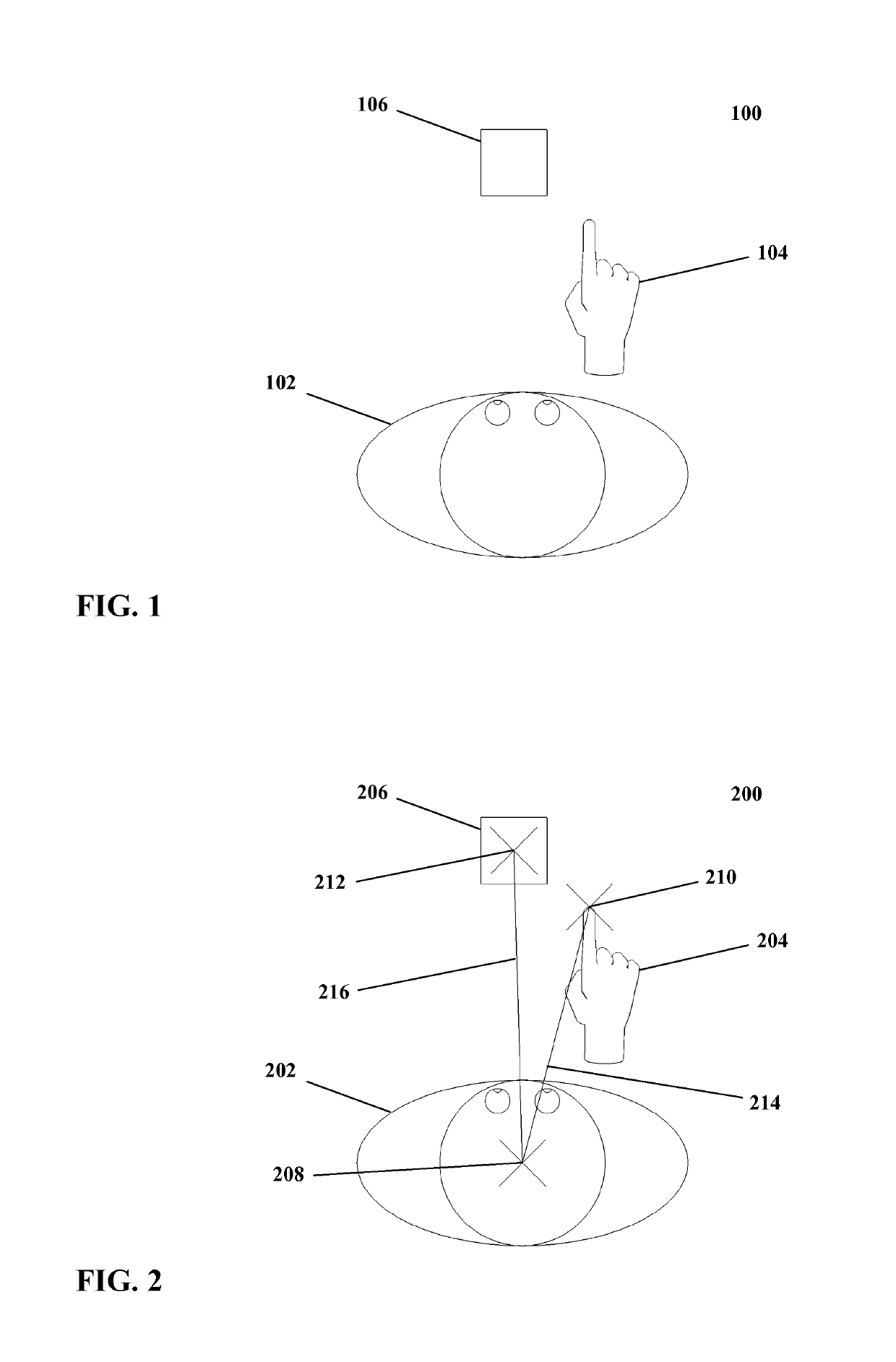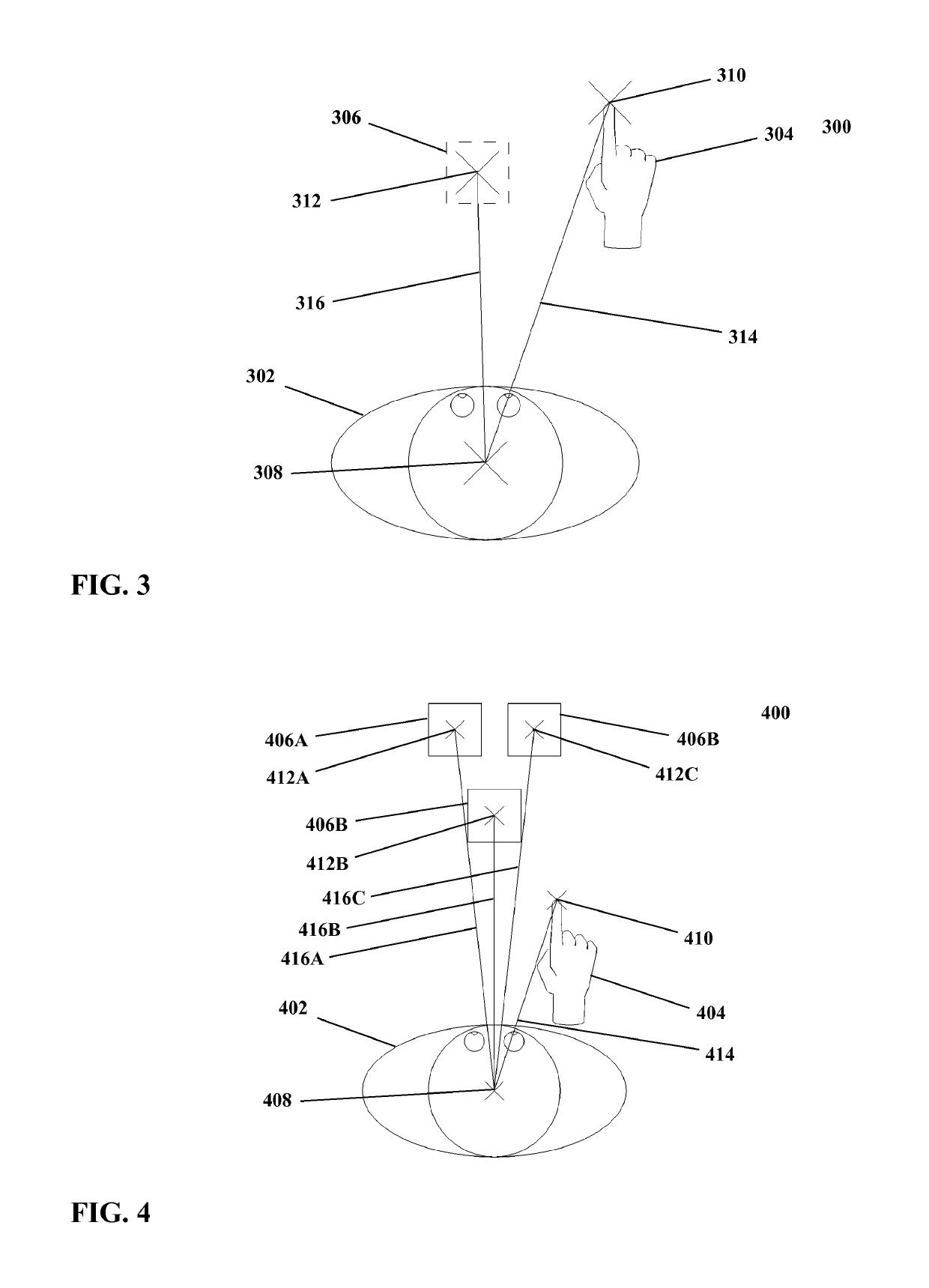Method and apparatus for addressing obstruction in an interface
a technology of interface and obstruction, applied in the field of three-dimensional interfaces, can solve the problems of increasing the chances that one entity may obscure another entity, affecting the visibility of the other, and the potential increase of the possibility of one such entity obscured by another entity, so as to reduce the visual obstructivity of the entity relative, and reduce the effect of the entity's obstructivity
- Summary
- Abstract
- Description
- Claims
- Application Information
AI Technical Summary
Benefits of technology
Problems solved by technology
Method used
Image
Examples
Embodiment Construction
[0060]With reference to FIG. 1, therein is shown a top-down schematic of an example embodiment of an interface 100 according to the present invention. An entity 106 is shown disposed within the interface 100. A user 102 with a manipulator 104 also is shown.
[0061]The interface 100 serves as an intermediary between users and some system, typically although not necessarily a computer system. The interface 100 may exist as an environment, typically though not necessarily a three dimensional environment, adapted for accepting entities 106 therein.
[0062]However, the interface 100 may not be an “object” in a strict sense, and as such may have no physical substance, no visible appearance, and / or no well-defined boundaries (although interfaces having physicality, a visible presence, and / or well-defined boundaries are not excluded). Rather, the interface 100 may be considered as a set of rules for interacting with some other system, and / or a space for interacting with that system, such system...
PUM
 Login to View More
Login to View More Abstract
Description
Claims
Application Information
 Login to View More
Login to View More - R&D
- Intellectual Property
- Life Sciences
- Materials
- Tech Scout
- Unparalleled Data Quality
- Higher Quality Content
- 60% Fewer Hallucinations
Browse by: Latest US Patents, China's latest patents, Technical Efficacy Thesaurus, Application Domain, Technology Topic, Popular Technical Reports.
© 2025 PatSnap. All rights reserved.Legal|Privacy policy|Modern Slavery Act Transparency Statement|Sitemap|About US| Contact US: help@patsnap.com



